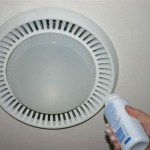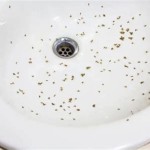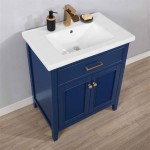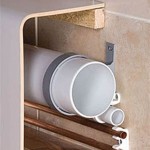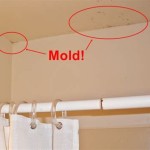Can Bathroom Floor Tiles Be Painted Over? A Comprehensive Guide
Painting bathroom floor tiles is often considered as a cost-effective and relatively quick alternative to complete tile replacement. When faced with outdated, discolored, or simply undesirable tile flooring, the prospect of painting it rather than enduring a disruptive and potentially expensive renovation can be highly appealing. However, the feasibility and longevity of painted bathroom floor tiles are dependent on multiple factors, including the type of tile, the preparation process, the quality of paint used, and the conditions within the bathroom environment. This article will delve into the details of painting bathroom floor tiles, outlining the factors to consider, the necessary steps, and the potential outcomes.
Before embarking on a painting project, it is crucial to thoroughly assess the existing tile condition. Damage such as cracks, chips, or significant grout erosion can compromise the final result and potentially lead to paint failure. Addressing these issues before painting is essential for achieving a more durable and aesthetically pleasing outcome. Furthermore, the type of tile material itself plays a significant role in determining the success of the painting endeavor. Porcelain and ceramic tiles, common in bathroom environments, generally accept paint better than more porous materials like natural stone, which may require specialized primers and sealers.
Key Point 1: Tile Type and Surface Preparation
The type of tile plays a pivotal role in determining the success of a painting project. Non-porous tiles, such as glazed ceramic or porcelain, present a smoother, less absorbent surface. This requires meticulous preparation to ensure adequate paint adhesion. Conversely, more porous tiles might absorb paint unevenly, leading to a less uniform finish. Regardless of the tile type, thorough cleaning is paramount. All dirt, grime, soap scum, and mildew must be completely removed. A strong alkaline cleaner is often recommended, followed by a thorough rinsing to eliminate any residue. Allow the tiles to dry completely before proceeding.
After cleaning, the next crucial step is sanding the tile surface. Lightly sanding the tiles with fine-grit sandpaper (around 220-grit) creates a slightly roughened surface, providing the paint with something to grip onto. This is particularly important for glossy or glazed tiles. Ensure uniform sanding across the entire surface, paying attention to edges and corners. Following sanding, remove all sanding dust with a tack cloth or damp cloth. Allowing sanding dust to remain on the surface will negatively impact paint adhesion and create an uneven finish.
Primer selection is another critical aspect of surface preparation. An epoxy-based primer specifically designed for tile is generally recommended. Epoxy primers offer excellent adhesion and create a durable base for the subsequent paint coats. Apply the primer evenly and according to the manufacturer's instructions. Allow the primer to dry completely before proceeding to the painting stage. Multiple coats of primer might be necessary, depending on the tile type and the desired level of adhesion.
Grout lines also require attention during surface preparation. If the grout is stained or discolored, consider cleaning it thoroughly with a grout cleaner or even replacing it before painting. Painting over stained or damaged grout might highlight the imperfections rather than conceal them. Applying a grout sealer after painting can help protect the grout lines and prevent future staining.
Key Point 2: Selecting the Right Paint
Choosing the appropriate paint is essential for achieving a durable and long-lasting finish on bathroom floor tiles. Standard wall paint is not suitable for this application due to its lack of durability and resistance to moisture and foot traffic. The ideal paint for bathroom floor tiles is a two-part epoxy paint specifically designed for floors. Epoxy paints are known for their hardness, durability, and resistance to chemicals, moisture, and abrasion.
Two-part epoxy paints consist of a resin and a hardener, which are mixed together immediately before application. This chemical reaction creates a very strong and durable coating. Follow the manufacturer's instructions carefully when mixing the paint to ensure proper curing and optimal performance. Avoid mixing more paint than can be used within the recommended timeframe, as the mixture will harden and become unusable.
Alternatively, specialized urethane paints formulated for floors can also be used. Urethane paints offer good durability and flexibility, making them resistant to cracking and chipping. However, they may not be as resistant to chemicals and moisture as epoxy paints. Ensure the chosen urethane paint is specifically designed for floor applications and is compatible with the primer used.
Consider adding a non-slip additive to the paint to improve the traction of the floor surface. This is particularly important in bathrooms, where moisture can create slippery conditions. Non-slip additives are typically fine granules that are mixed into the paint before application. Follow the manufacturer's instructions for the recommended amount of additive to use. These additives ensure the floor is safer to walk on, especially when wet.
The application method also influences the final result. Use high-quality brushes and rollers designed for epoxy or urethane paints. Apply thin, even coats to avoid drips and runs. Allow each coat to dry completely before applying the next. Multiple thin coats are preferable to a single thick coat, as they provide a more durable and uniform finish.
Key Point 3: Environmental Considerations and Maintenance
The bathroom environment presents unique challenges for painted floor tiles. High humidity, frequent temperature fluctuations, and exposure to water and cleaning chemicals can all impact the lifespan of the painted surface. Proper ventilation is crucial during and after the painting process to allow the paint to cure properly and prevent the buildup of moisture. Open windows or use a ventilation fan to ensure adequate airflow.
The curing time for epoxy and urethane paints can vary depending on the product and the environmental conditions. Follow the manufacturer's instructions for the recommended curing time before subjecting the painted floor to foot traffic or moisture. Premature exposure to these elements can compromise the paint's adhesion and durability.
Regular maintenance is essential for preserving the appearance and integrity of the painted floor. Clean the floor regularly with a mild, pH-neutral cleaner. Avoid using harsh chemicals, abrasive cleaners, or scouring pads, as these can damage the paint finish. Wipe up spills immediately to prevent staining. Consider using floor mats or rugs in high-traffic areas to protect the painted surface from wear and tear.
Even with meticulous preparation and proper maintenance, painted bathroom floor tiles are generally not as durable as professionally installed, unpainted tiles. The paint is susceptible to chipping, scratching, and peeling over time, especially in areas with heavy foot traffic or frequent exposure to moisture. Periodic touch-ups may be necessary to maintain the appearance of the painted floor. The frequency of touch-ups will depend on the quality of the paint, the thoroughness of the preparation, and the amount of use the floor receives.
For those seeking a more durable and long-lasting solution, complete tile replacement remains the best option. While this involves a greater initial investment and more extensive labor, the result is a floor that is more resistant to wear and tear, moisture, and chemicals. However, painting bathroom floor tiles can be a viable option for those on a tight budget or seeking a temporary cosmetic upgrade. It offers the possibility of easily changing the floor's color and look with minimal effort.
Furthermore, consider the long-term impact of the painted surface. While the painted tiles might look appealing initially, any eventual wear and tear will reveal the original tile underneath. This may require further touch-ups or eventually reverting back to the original tile or opting for a complete replacement. The temporary and somewhat labor-intensive nature of maintaining a painted tile floor should be carefully weighed before committing to this solution.
Finally, assess the overall aesthetic goals. While painting can transform the color of the tiles, it cannot alter the texture or size of the tiles. If the goal is to significantly change the style of the bathroom, replacing the tiles might be the more effective approach. Modern tile options can significantly enhance the bathroom's design, providing a permanent and visually impactful upgrade that painting cannot replicate.

How To Paint Your Bathroom Floor Tile Young House Love

How To Paint Tile Floor In A Bathroom Angela Marie Made

How To Paint A Tile Floor Artsy Rule

How To Paint Bathroom Tile Floors

How To Paint Tile Floor Angela Marie Made

Painted Floor Tile Bathroom Makeover

20 Painted Tile Floor Ideas To Update Your Space Making Maanita

The Best Paint For Tile Arinsolangeathome

When You Just Can T Take Pink Tile Anymore Painting My Bathroom Floor

How To Paint Your Bathroom Tile Floors Toolbox Divas
Related Posts
